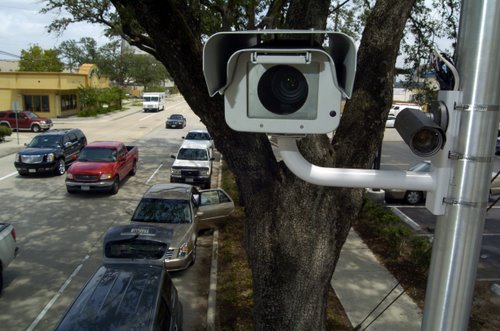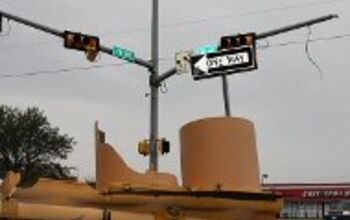Texas Legislature Ends Red Light Cameras
The Texas House of Representatives voted on Friday to bring an end to the use of red light cameras in the state. During consideration of a bill to reauthorize the Texas Department of Transportation (TxDOT), members debated over 180 amendments to the underlying legislation. Amendment Number 102 added a sunset clause to state approval for the use of automated ticketing machines. This provision passed by a vote of 107-36 and the underlying TxDOT reauthorization measure was adopted on a voice vote.
It is a close call whether the sunset provision will make it into law, based on the Texas legislature’s history with red light cameras. Between 1995 and 2003 the House rejected open attempts to authorize the cameras in four legislative sessions. That did not stop Representative Linda Harper-Brown (R-Irving) who snuck a one-sentence provision allowing municipalities to issue “civil” citations for traffic crimes into unrelated legislation dealing with commercial motor vehicle standards. The provision became law in 2003.
Many House members were furious at what they saw as an underhanded move and voted by a three-to-one margin to overturn the provision. The state Senate, however, did not share the enthusiasm of the House. Although a majority of senators voted to strip Harper-Brown’s langauge, the Senate leadership allowed the effort to die with a parliamentary maneuver.
Ortiz and Elkins have a backup plan. If the Senate allows photo ticketing to survive, the representatives added another measure to protect drivers from being trapped by short yellows.
“[TxDOT] by rule shall require that the change interval in a light equipped with a photographic traffic signal enforcement system must be at least one second longer than the minimum change interval established in accordance with the Texas Manual on Uniform Traffic Control Devices,” the Ortiz-Elkins amendment states.
Already, the states of Ohio and Georgia have enacted longer yellow requirements to great effect. In Georgia, seven cities known to have lengthened yellows since January have seen violations decrease by 70 to 80 percent. A Texas Transportation Institute (TTI) study documented a 40 percent decrease in collisions after testing the benefits of increasing the yellow warning given to motorists before an intersection signal changes from green to red ( view study).
More by The Newspaper
Latest Car Reviews
Read moreLatest Product Reviews
Read moreRecent Comments
- THX1136 It's good knowing a purchase decision was well made. Glad to hear it's been a good car for you, Corey! May the good times continue to roll.
- Kwik_Shift_Pro4X I like bright red, like Ford's "Race Red" with black accents/trim on hot hatches. A distant second would be a lighter school bus yellow, like on a 90s Land Rover Discovery Camel Trophy edition.
- KOKing The color has to look right on the car first and foremost, but given the choice, I'll pick the not-bland color every time.
- Redapple2 Like the color but would never buy. Gladiator? Love them. (but some say they drive super wonky?)
- Redapple2 Note to layman. Lifts change the resting angles of suspension components. Then add full length of travel in the duty cycle and now you are repeatedly doing things to the suspension was never design for. Failures are very common and fatal. Do it only if you are stupid.


































Comments
Join the conversation
Wondering which way the Texas Senate will go on this issue is kinda like wondering what slant Fox News will take concerning anything Obama says. Meanwhile they are installing cameras today in town here, and I'm sure the city will sign a nice long contract...
[...] Diego when citizens found out the contractors running the cameras got paid by the ticket, and when Texas had to remove the cameras when not enough people were running red lights to pay for [...]